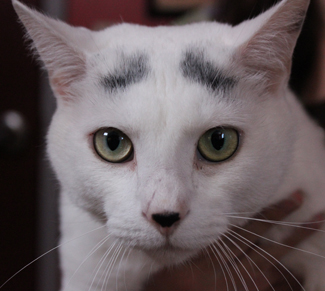
Dr. Phil Zeltzman is a mobile, board-certified surgeon in Allentown, PA. Find him online at www.DrPhilZeltzman.com. He is the co-author of “Walk a Hound, Lose a Pound” (www.WalkaHound.com).
Katie Kegerise, a Certified Veterinary Technician in Reading, PA, contributed to this article.
Jada, a 16 year old cat, was presented for a large mass involving the front part of her lower jaw. The mass must have been there for months, slowly invading the bone, the teeth and the gums. It was causing significant pain, to the point that Jada had not had a normal meal in weeks. From experience, this was very likely to be a cancerous mass called a squamous cell carcinoma.
The tumor had taken its toll and Jada was extremely thin and could barely move. Virtually anyone could see that the end of the road was near. However, the clients, a young couple, could not see what everyone else was seeing. They came for a surgery consultation, convinced that I would remove the mass, and Jada would be happy ever after. They were clearly in complete denial.
From a technical standpoint, sure, I could have removed the mass. That's what I do. But just because I can, doesn't mean that I should. We also could have placed a feeding tube into the stomach to give Jada enough calories. But that still wouldn't fix the problem of the cancerous mass that was slowly taking over her lower jaw. So I told the clients that their cat was suffering and that I did not think it was ethical to remove the mass.  I saw an animal that was slowly deteriorating from the cancer ravaging her body. They saw a “simple” mass that could have been removed. Veterinarians are supposedly fortunate because they can legally euthanize patients. But that’s one big responsibility. Yet, as much as we hate to put a patient to sleep, sometimes it's just the right thing to do.
I saw an animal that was slowly deteriorating from the cancer ravaging her body. They saw a “simple” mass that could have been removed. Veterinarians are supposedly fortunate because they can legally euthanize patients. But that’s one big responsibility. Yet, as much as we hate to put a patient to sleep, sometimes it's just the right thing to do.
It was almost as if the clients couldn't see the reality of what was happening to their pet. They even tried to reason with me, or make me feel guilty. “She’s our baby, you have to help her, that’s your job,” said the wife. “We’ll pay whatever you want,” the husband added. Money clearly had nothing to do with the situation. Jada’s quality of life was poor, and there was little modern medicine could offer to change that significantly. Any treatment option, even palliative, was a Band-Aid approach. It was one tough ethical dilemma.
Since I stood my ground, the clients left the hospital. I never heard from Jada again. At this point, I hope that she is in kitty heaven.
So what is the moral of this sad story?
Just because we can perform a procedure, doesn’t mean that we should. Medical professionals can sometimes focus on the problem (Jada’s tumor) and forget the whole patient. This is how tunnel vision can harm the patient.
Owning a pet is a huge responsibility. This includes providing good, worry-free, pain-free quality of life. If we cannot ensure that, then we have a moral obligation to find a reasonable, appropriate, ethical solution. If that is not possible, then euthanasia (which means "good death” in Greek) may be a humane solution. Nobody likes it, but sometimes it is the right thing to do to ensure that our pets live and die with dignity.
If you have any questions or concerns, you should always visit or call your veterinarian – they are your best resource to ensure the health and well-being of your pets.
